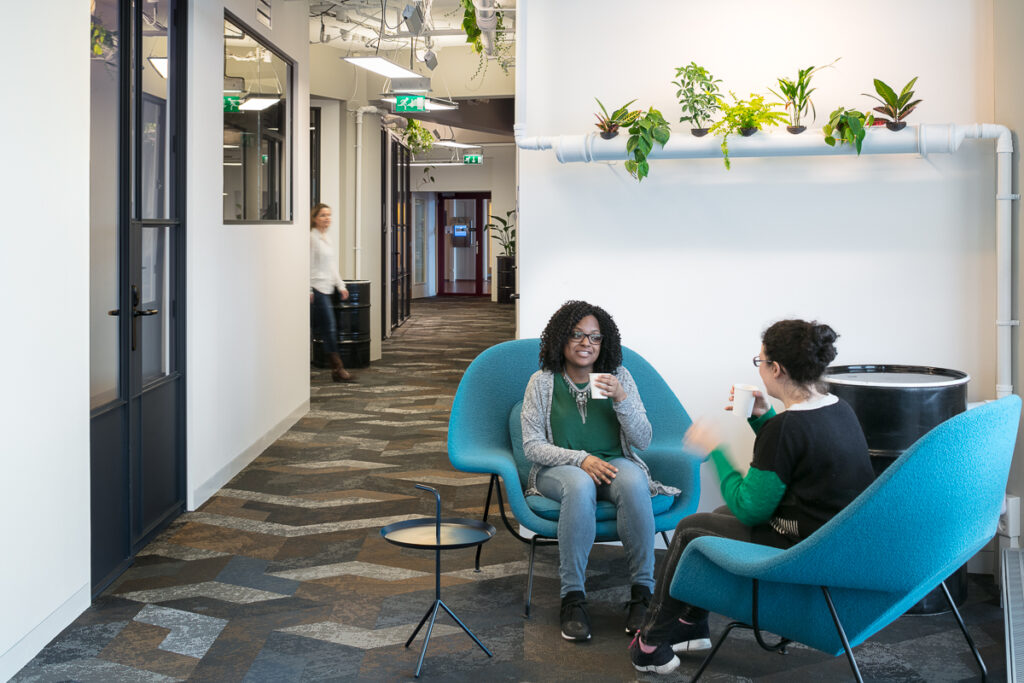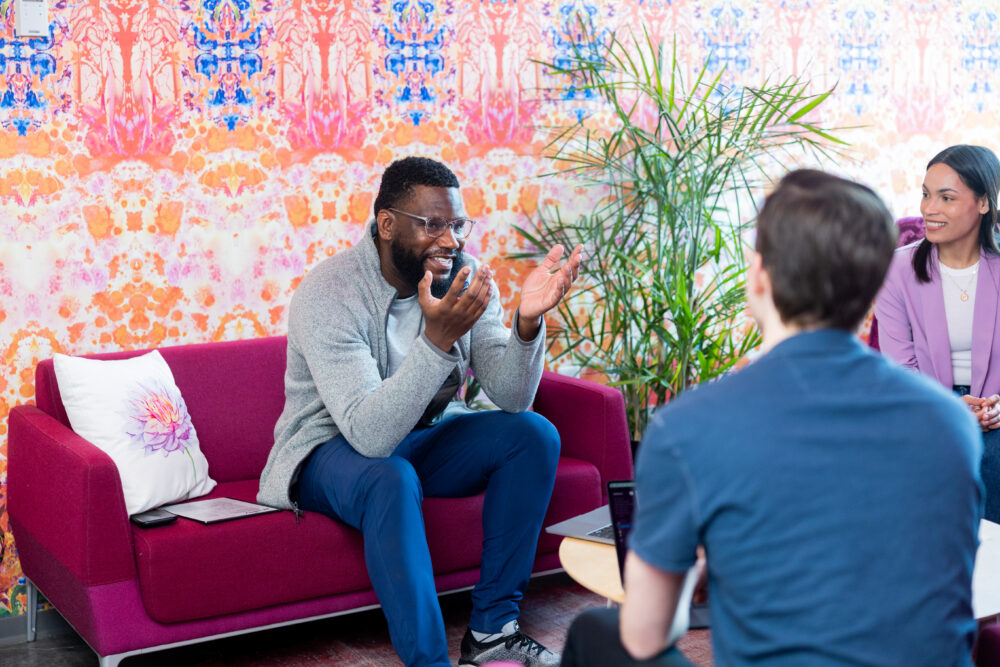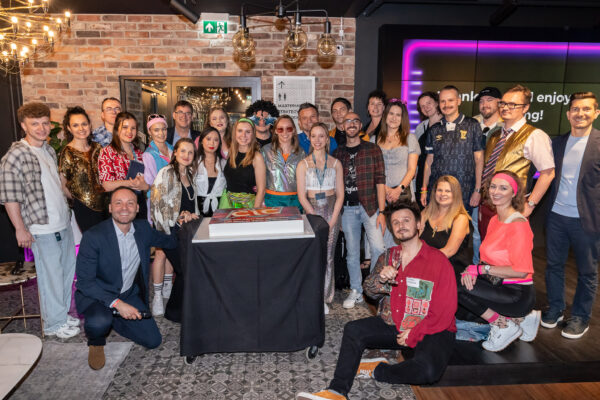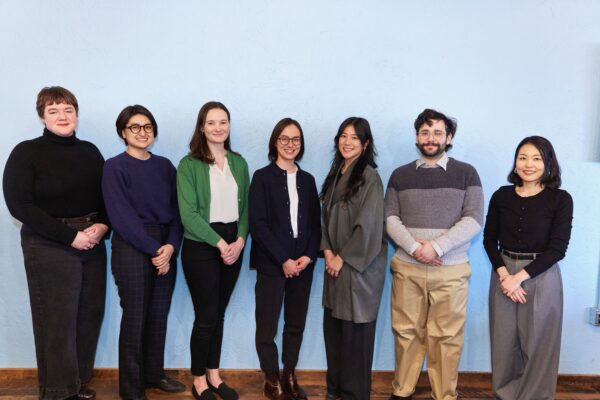We spend a significant portion of our time at work, and a new issue is popping up in today’s workforce: isolation and loneliness.
People are feeling lonely at work — a Gallup report found that 20% of employees reported feeling lonely. Though fully remote employees reported these feelings at a slightly higher rate than those with hybrid or fully in-person work schedules, those who come into a physical workspace also report daily feelings of loneliness. One explanation is that coming into “the office” may not feel as meaningful of an experience as it once was.
Those from an academic or research background may experience culture shock after transitioning from a busy university lab, shared Enzymetrics Bioscience Chief Operating Officer and Co-Founder Jon Kiel in the Redefining the Workspace to Strategically Support Corporate Culture, Innovation, and Growth report from HBR Analytic Services (HBRAS), sponsored by CIC. “By contrast, in a startup, we’re very much on an island with the same handful of people sitting in the same room every day,” said Kiel. “It can be professionally lonely.”
Loneliness is not only a problem for individuals, but organizations as a whole. According to researchers at King’s College in London, loneliness negatively impacts job performance and increases the risks of burnout.
How can employers help combat loneliness at work? One way is to create and encourage the use of “third places” in the workplace for in-person social connection.
What is a “third place” and how does it relate to company culture?
American sociologist Ray Oldenburg created the term “third place” to describe a space dedicated to conversing, connecting and creating community. At a very general level, Oldenburg’s framework is:
- First place: Home
- Second place: Work
- Third Place: Community space
Though the workplace is technically the “second place” in Oldenburg’s framework, the world has changed considerably in the thirty years since he coined the term in his book The Great Good Place. Workspace design today is less concerned with ensuring a dedicated desk space for each employee, leaving room for business leaders to take inspiration from traditional third places.
By centering the values of a traditional third place – good company, stimulating conversations about topics other than work and home that equalize those in attendance – you can create literal and metaphorical spaces within your office space or lab for employees to connect and collaborate.
“There’s this opportunity for something that’s a little more connected and a little more inspiring. These are some of the elements companies are reaching for in what we’d call creating community or creating culture,” said Tim Rowe, CIC founder and CEO, to Trey Williams for Fortune.
A strong company culture is not a luxury for businesses of all shapes, sizes, and stages. There is no shortage of research about the benefits of a positive workplace culture and nearly every respondent (98%) to the HBRAS survey believed that company culture impacts an organization’s ability to succeed.
Companies that aim to innovate, disrupt, or discover are excellent candidates for this approach to workspace because connection and collaboration are instrumental to innovation. The Allen Curve, named after former MIT professor Thomas Allen, has proven time and time again that physical distance reduces collaboration and communication, which reduces the chances innovation will occur.
For companies looking to promote more in-person workdays, creating the space for employees to connect on a human level can entice people to come into an office or lab and forge stronger relationships with their colleagues. Recent research into the impacts of coworkers’ proximity also suggests that being near a coworker benefits the long-term career trajectory of younger employees because it increases mentorship and feedback.

Stronger connections, collaboration, and culture can reduce loneliness because the more engaged an employee is, the less likely they are to feel lonely at work. Higher employee engagement is associated with many benefits for companies, including better mental health, higher productivity, and better business outcomes.
How to create third places at work
The most important element of a “third place” is creating a culture that values connection and socialization. As Rowe said to Fortune, think beyond after-work happy hours and similar events. Instead, look within the office for opportunities to create a third place that will serve your company, and employees, better and for far longer.
Giving employees permission to put productivity on the back burner can be a culture driver that makes the workplace meaningful again and pays long-term dividends. Take lunchtime, for example. Encourage employees to step away from their desks and screens, eat in a communal space, and have conversations about what they are reading, watching on TV, or discussing any other non-work-related topic.
We put this into practice across our global CIC innovation campuses. Every Tuesday morning, we host Weekly Wakeup breakfasts that help build community among CIC members.
Think creatively about how you can activate spaces within your workplace for community and connection building. You may set up a communal puzzle, for example, to give employees a break from their day-to-day tasks. Employees may work on this together at odd times in impromptu team building.
Opportunities for play at work help stimulate creativity, curiosity, and innovation. Need inspiration for how to facilitate play in your workplace? LEGO offers open-source instructions for its LEGO® SERIOUS PLAY® methodology, a facilitated meeting that can help improve group problem-solving.

Programming and events are a great opportunity to connect over a shared experience. We see the benefits of intentional programming that connects innovators during the thousands of events through Venture Café, an innovation ecosystem activator started within CIC in 2009.
Networking events, conferences, or other work-related offsite events can offer employees a chance to mingle with each other and those within their industry. Venterra Group, a global offshore wind services company with office space in CIC Providence, regularly hosts industry roundtables to create a collaborative space for discussion. These valuable sessions have helped the entire offshore wind innovation cluster thrive.
What other workspace changes can support my business?
We recently shared changes companies can consider in the second half of 2024, including physical and cultural changes that can foster in-person, collaborative work and innovation.
To learn more about the benefits of intentional workspace changes, download the full Redefining the Workspace to Strategically Support Corporate Culture, Innovation, and Growth report.




